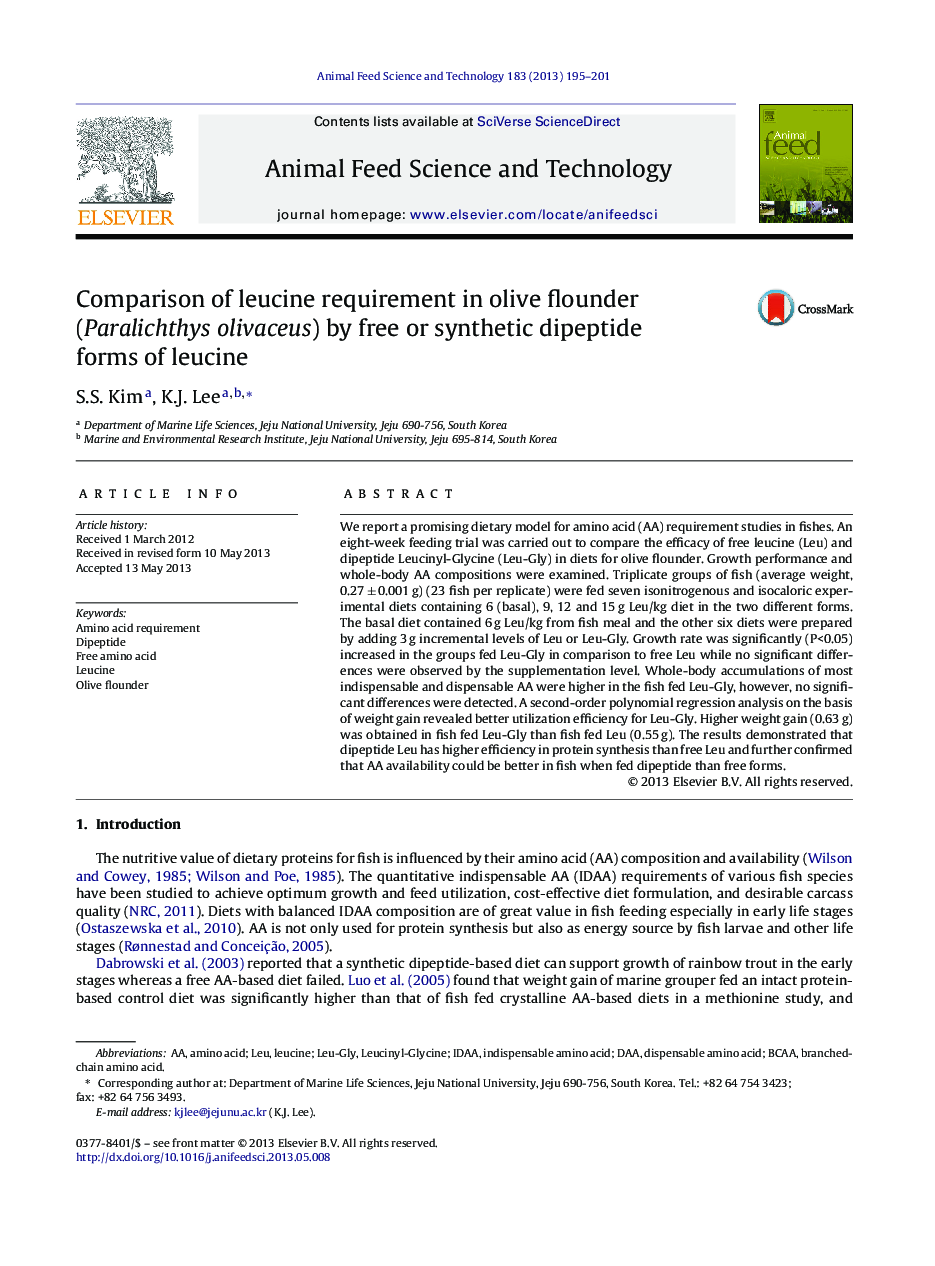| Article ID | Journal | Published Year | Pages | File Type |
|---|---|---|---|---|
| 2419673 | Animal Feed Science and Technology | 2013 | 7 Pages |
We report a promising dietary model for amino acid (AA) requirement studies in fishes. An eight-week feeding trial was carried out to compare the efficacy of free leucine (Leu) and dipeptide Leucinyl-Glycine (Leu-Gly) in diets for olive flounder. Growth performance and whole-body AA compositions were examined. Triplicate groups of fish (average weight, 0.27 ± 0.001 g) (23 fish per replicate) were fed seven isonitrogenous and isocaloric experimental diets containing 6 (basal), 9, 12 and 15 g Leu/kg diet in the two different forms. The basal diet contained 6 g Leu/kg from fish meal and the other six diets were prepared by adding 3 g incremental levels of Leu or Leu-Gly. Growth rate was significantly (P<0.05) increased in the groups fed Leu-Gly in comparison to free Leu while no significant differences were observed by the supplementation level. Whole-body accumulations of most indispensable and dispensable AA were higher in the fish fed Leu-Gly, however, no significant differences were detected. A second-order polynomial regression analysis on the basis of weight gain revealed better utilization efficiency for Leu-Gly. Higher weight gain (0.63 g) was obtained in fish fed Leu-Gly than fish fed Leu (0.55 g). The results demonstrated that dipeptide Leu has higher efficiency in protein synthesis than free Leu and further confirmed that AA availability could be better in fish when fed dipeptide than free forms.
